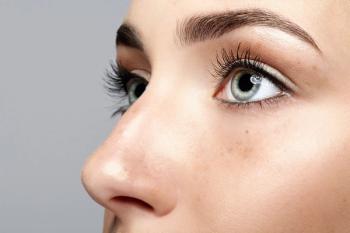
Overview of the Research on Cannabis for COVID-19
Given the fast and furious mobilization of the global healthcare community to understand the nature of the coronavirus, how to treat it, and, eventually, how to prevent it, the sheer volume of research on COVID-19 is not at all surprising. What is, perhaps, surprising, especially given how recently it’s been since the COVID-19 breakout, is that there are so many research publications on the potential for cannabis to be used to treat the virus. On the other hand, perhaps the abundance of research on cannabis for COVID-19 is not so surprising. After all, it is a virus that causes an immune response, which may escalate into a virulent inflammatory reaction. And an enormous body of research on cannabis—and cannabidiol (CBD) in particular—has shown cannabis to induce strong anti-viral and anti-inflammatory effects. It is still early days, so no clinical studies establishing the efficacy of cannabis for COVID-19 have yet been conducted, but studies have established several clear mechanisms of action for using cannabis to treat COVID-19.
Overview of COVID-19
Before moving on to understand what the research says about how cannabis can be used to treat COVID-19, let’s start by understanding how COVID-19 transmission and replication work, along with the nature of patient symptomology.
Transmission and Replication
COVID-19 is generally transmitted from infected individuals via airborne droplets that enter new hosts through the respiratory system to the lungs, which serve as a “gateway” to “the throat, heart and blood vessels, kidney, gut, liver and brain,” (1). COVID-19 molecules use spike proteins to bind to ACE2 receptors on cells (1). The binding of COVID-19 molecules to ACE2 receptors has two effects. First, it causes ACE2 receptor upregulation, which enables more of the virus to bind to receptors and enter the cell (2). And second, it enables COVID-19 molecules to pass through the cell membrane into the cell’s interior and into its RNA (3). The presence of the virus in the body produces an immune response.
Symptoms in Mild Cases
In mild cases of COVID-19 infection, patients may or may not show symptoms. The severity of patients’ responses varies with age, genetics, ethnicity, and health status. Variable symptoms appear between two days and two weeks after being exposed, and symptoms include fever, cough, fatigue, shortness of breath, loss of smell and taste, diarrhea, and vomiting (1).
Symptoms in Severe Cases
When COVID-19 infections become severe, the immune system responds to the viral invasion with an inflammatory cytokine storm, that is, patients develop acute respiratory distress syndrome, which, in severe cases, may lead to death (1).
Cannabis Mechanisms of Action for Treating COVID-19
Now that we have a basic understanding of how COVID-19 is transmitted, how it replicates, and the symptoms associated with infections, we can examine the mechanisms of action (MoA) researchers have discovered for using cannabis to treat COVID-19. Researchers have described five distinct possible MoAs for using cannabis to treat COVID-19.
- Compete for Binding Site. Cannabis binds ACE2 receptors and thus competes with COVID-19 for binding site. By crowding out COVID-19 binding, cannabis prevents infections from starting (2).
- Inhibit Replication. CBD may prevent COVID-19 from replicating after it enters host cells (3,4,5). When CBD enters the cell, it may activate the generation of interferons, proteins that prevent COVID-19 from replicating (6).
- Act as Anti-Inflammatory. CBD has well-established anti-inflammatory effects that can decrease the production of cytokines induced by COVID-19 infections (1,3,4,7,8). By inhibiting COVID-19-induced inflammation (for example, production of IL-6 and TNFa cytokines), CBD may thus prevent post-COVID-19 complications, including Long COVID (2,3), neuropsychiatric symptoms (2), and neurotoxicity (1,2,5,7).
- Downregulate Proteins. CBD has been shown to downregulate ACE2 and TMPRSS2, two proteins hijacked by COVID-19 to enter cells and replicate (3,8,9). CBD can thus prevent neuro-degeneration symptoms and disorders, including Long COVID (2,3,7,8,9).
- Treat Comorbidities. By acting on CB1 and CB2 receptors, cannabis can help treat the anxiety, pain, and post-traumatic stress disorder (PTSD) that patients experience during and after being infected with COVID-19 (8). Also, acting on PPAR-γ receptors, CBD can limit the onset of pulmonary fibrosis, a lung complication experienced by a few COVID-19 survivors (3,4,5).
Concerns with Using CBD for COVID-19
There are several concerns with using CBD to treat COVID-19 (8). First, no clinical studies have yet been conducted providing evidence that CBD is efficacious for treating COVID-19. Without clinical studies, there is also no information to provide guidance on dosing. Importantly, CBD is an immuno-suppressant. To the extent, then, that patients need a strong immune system for fighting COVID-19 or other comorbidities, using CBD will impair their ability to do so. Also, CBD affects enzymes (CYP) that metabolize many therapeutics, so using CBD may interact with other therapeutics patients may be taking alongside CBD. Finally, there is concern that many CBD products are not tested, so patients are not assured of product quality.
In Short
While no clinical studies establishing the efficacy of using CBD to treat COVID-19 have yet been conducted, there is a substantial body of pre-clinical evidence establishing clear mechanisms of action for using CBD to treat COVID-19: CBD may prevent COVID-19 infections from taking hold; it may prevent an infection from escalating and provoking cytokine storms; and it may prevent infection-induced comorbidities, including neurodegeneration, anxiety, and PTSD. While CBD appears to be quite promising as a COVID-19 therapeutic, there are several notable concerns with using it to treat the virus. CBD is an immuno-suppressant, and CBD may interact with the metabolization of other therapeutics.
References
- Onaivi, E.S. and Sharma, V., Cannabis for COVID-19: can cannabinoids quell the cytokine storm? Future Science OA. 2020.
https://www.future-science.com/doi/epub/10.2144/fsoa-2020-0124 - Sarkar, I., et al, In silico inquest reveals the efficacy of Cannabis in the treatment of post-COVID-19 related neurodegeneration. Journal of Biomolecular Structure and Dynamics. 2021.
https://doi.org/10.1080/07391102.2021.1905556 - Stasiłowicz, A., et al, Cannabis sativa L. as a Natural Drug Meeting the Criteria of a Multitarget Approach to Treatment. International Journal of Molecular Sciences. 2021.
https://www.mdpi.com/1422-0067/22/2/778 - Esposito, G., et al, The potential of cannabidiol in the COVID‐19 pandemic: a hypothesis letter. British Journal of Pharmacology. 2020.
https://www.researchgate.net/publication/3420872 - Kovalchuk, A., et al, Fighting the storm: could novel anti-TNFα and anti-IL-6 C. sativa cultivars tame cytokine storm in COVID-19? Aging. 2021.
https://www.ncbi.nlm.nih.gov/pmc/articles/PMC7880317/pdf/aging-13-202500.pdf - Reyer, M., Researchers recommend clinical trials for CBD to prevent COVID-19 based on promising animal data. U Chicago Medicine. 2022.
https://www.uchicagomedicine.org/forefront/research-and-discoveries-articles/researchers-recommend-clinical-trials-for-cbd - Anil, S. M., et al, Cannabis compounds exhibit anti‐inflammatory activity in vitro in COVID‐19‐related inflammation in lung epithelial cells and pro‐inflammatory activity in macrophages. Nature. 2021.
https://www.nature.com/articles/s41598-021-81049-2 - Malinowska, B., et al, Opportunities, Challenges and Pitfalls of Using Cannabidiol as an Adjuvant Drug in COVID-19. International Journal of Molecular Sciences. 2021.
https://www.mdpi.com/1422-0067/22/4/1986 - Wang, B., et al, In Search of Preventative Strategies: Novel Anti- Inflammatory High-CBD Cannabis Sativa Extracts Modulate ACE2 Expression in COVID-19 Gateway Tissues. Aging. 2020.
https://www.preprints.org/manuscript/202004.0315/v1?fbclid=IwAR2Yimux4U0XbQPd3l_OWEmcNMwlT3qHSVrwJhiqttCDYBMSDY9hkuXKnKo
About the Author
Ruth Fisher, PhD, is a systems design researcher and analyst. She analyzes markets to determine how environments shape outcomes. She is co-founder of CannDynamics, and author of The Medical Cannabis Primer and Winning the Hardware-Software Game: Using Game Theory to Optimize the Pace of New Technology Adoption. Dr. Fisher has worked in the technology and healthcare sectors on behalf of technology companies, early-stage researchers, physicians, and technology start-ups.
Newsletter
Unlock the latest breakthroughs in cannabis science—subscribe now to get expert insights, research, and industry updates delivered to your inbox.





